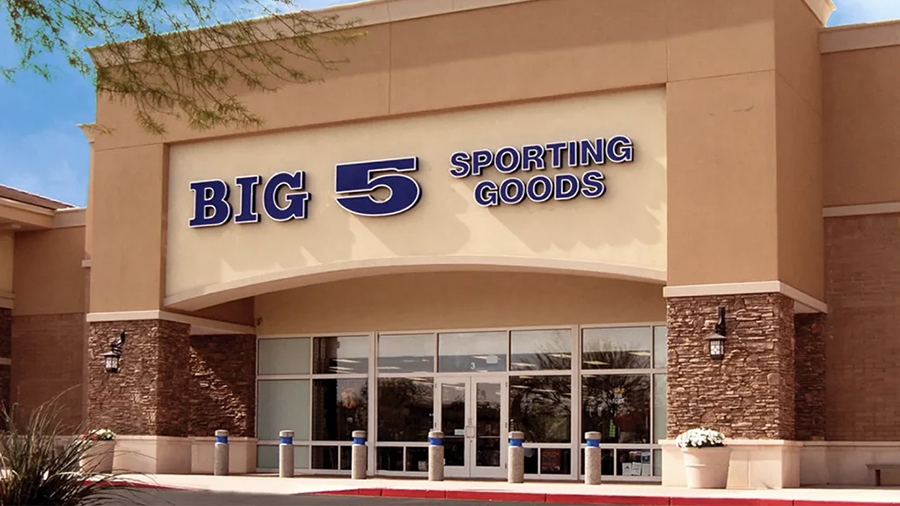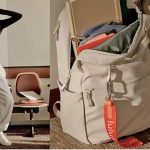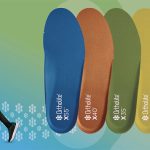Big 5 Sporting Goods Corporation CEO Steve Miller said Tuesday, February 25, that the company’s fourth-quarter results were consistent with previously announced expectations, delivering earnings in the middle of the company’s guidance range despite ongoing challenges to its top-line performance.
Translation: Sales are not happening, so we are focused on margin improvement and inventory.
Fourth quarter net sales were $181.6 million in the 2024 fourth quarter, compared to net sales of $196.3 million in the fourth quarter of fiscal 2023. Fourth quarter same-store (comp) sales decreased 6.1 percent year-over-year. Miller said the sales weakness reflects a continuation of the persistent macroeconomic headwinds impacting consumer discretionary spending.
“Additionally, our winter-related product sales over the fourth quarter were soft relative to expectations as winter weather conditions were unfavorable, particularly across our southern tier of stores where we experienced drought-like conditions,” Miller continued. “The dry conditions were a huge factor in contributing to the environment that led to the tragic wildfires that devastated the Greater Los Angeles area last month.”
For the Quarter
- Apparel comp sales declined 1.3 percent
- Footwear comp sales were down 5.4 percent
- Hardgoods comp sales decreased 8.7 percent.
- The average sale was down 2.3 percent, with transactions down 3.8 percent.
Income Statement Summary
Gross profit for the fiscal 2024 fourth quarter was $51.2 million, compared to $59.2 million in the fourth quarter of the prior year.
“In the face of ongoing sales challenges, we remain focused on how best to optimize gross profit dollars,” Miller emphasized.
The company’s gross profit margin was 28.2 percent of net sales in the fourth quarter versus 30.2 percent in the prior-year Q4 period. The company said the decrease in gross profit margin compared with the prior-year quarter primarily reflected higher store occupancy and distribution expense, including costs capitalized into inventory as a percentage of net sales, and lower merchandise margins, which declined 23 basis points year-over-year.
Overall selling and administrative expense for the quarter decreased by $1.0 million from the prior-year period, primarily reflecting lower labor costs and a gain of $0.9 million related to an insurance settlement. As a percentage of net sales, selling and administrative expense was 39.3 percent in the fiscal 2024 fourth quarter, compared to 36.9 percent in the fiscal 2023 fourth quarter due to the lower sales base.
“We continue to focus on managing the expenses within our control, considering the ongoing economic challenges,” said company CFO Barry Emerson.
Net loss for the fourth quarter of fiscal 2024 was $20.9 million, or 95 cents per basic share, including a gain related to an insurance settlement of 4 cents per basic share; this compares to a net loss of $8.9 million, or 41 cents per basic share in the fourth quarter of fiscal 2023, which included a 2 cents per basic share store asset impairment charge.
Because of the valuation allowance related to deferred tax assets established in the third quarter of fiscal 2024, the net loss for the fourth quarter of fiscal 2024 does not reflect an income tax benefit. Net loss for the fourth quarter of fiscal 2023 reflects an income tax benefit of $4.5 million.
Adjusted EBITDA was negative $16.4 million in the fourth quarter, compared to negative adjusted EBITDA of $8.7 million in the 2023 fourth quarter.
Full Year 2024 Summary
Fiscal 2024 full-year net sales were $795.5 million, compared to net sales of $884.7 million for fiscal 2023. Same-store sales decreased 9.4 percent for the full year versus the prior year.
Net loss for the fiscal 2024 full year was $69.1 million, or $3.15 per basic share, which included a non-cash charge for the establishment of a valuation allowance related to deferred tax assets of $21.8 million, or 99 cents per basic share, and a non-cash store asset impairment charge of $0.8 million, or 4 cents per basic share. These charges were partially offset by the gain related to an insurance settlement; this compares to a net loss for the fiscal 2023 full year of $7.1 million, or 33 cents per basic share.
Adjusted EBITDA was a negative $16.4 million for the fourth quarter of fiscal 2024, compared to negative $8.7 million in the prior-year Q4 period.
For the fiscal 2024 full year, Adjusted EBITDA was a negative $36.7 million, compared to a positive $7.3 million in the prior year.
Balance Sheet and Cash Management Summary
In December 2024, the company amended and extended its $150 million credit agreement with Bank of America, which matures in December 2029. The company ended the 2024 fiscal fourth quarter with $13.8 million of borrowings under the credit facility and a cash balance of $5.4 million.
Merchandise inventories at quarter-end decreased 5.6 percent year-over-year compared to 2023 year-end, which is said to reflect the company’s efforts to manage inventory levels relative to sales.
“We ended the quarter with inventory down 5.6 percent year-over-year, reflecting our efforts to align inventory levels with sales,” Miller continued. “This positioning enables us to deploy inventory more productively across our network while maintaining flexibility to capitalize on opportunistic buying opportunities that align with our customers’ value orientation.”
Emerson said CapEx, excluding non-cash acquisitions, totaled $10.9 million for fiscal 2024, primarily representing investments in store-related remodeling, new stores, distribution center equipment and computer hardware and software purchases.
“For the 2025 full year, we expect CapEx in the range of $4 million to $8 million representing investments in store-related remodeling primarily,” Emerson shared.
Net cash used in operating activities was recorded at $11.4 million in fiscal 2024; this compares to net cash provided by operating activities of $18.5 million in fiscal 2023. Emerson said the decrease was primarily attributed to a larger net loss in the current period.
First Quarter Guidance
For the fiscal 2025 first quarter, the company expects same-store sales to be down in the mid- to high-single-digit range compared to the fiscal 2024 first quarter. The company’s same-store sales guidance reflects an expectation that macroeconomic headwinds will continue to impact discretionary consumer spending over the balance of the first quarter.
Fiscal 2025 first-quarter net loss per basic share is expected to range from 75 cents to 85 cents, which compares to fiscal 2024 first quarter net loss per basic share of 38 cents.
Store Openings and Closings
The company has 414 stores in operation, reflecting eight store closures in the 2025 first quarter as part of its ongoing efforts to optimize its store base. During the remainder of fiscal 2025, the company expects to close approximately seven additional stores and does not expect to open any new stores.
“As part of our broader strategic initiatives, we continue to optimize our store portfolio to focus our resources on our most productive stores,” said Miller. “We anticipate closing 15 stores in fiscal 2025, including eight locations that we have already closed in the first quarter. This strategic footprint rationalization enables us to reallocate capital and inventory to our best-performing locations while driving meaningful cost efficiencies across our network.”
Miller said sales trends remain challenged as they have yet to see improvement in the macroeconomic conditions that are affecting consumer discretionary spending. He said Big 5’s winter business, which is highly significant to its first quarter performance, has continued to be very soft relative to last year.
“Consumer spending in this category is especially discretionary and, of course, responsive to weather conditions,” he noted.
“We have experienced a distinct geographic bifurcation in our winter product sales due to weather variances with our southern markets continuing to experience well below normal snowfall,” Miller continued. “Over the balance of the quarter, although our winter business is still potentially meaningful as we transition seasons, spring-related activities, including the ramp-up of baseball, become the key drivers to our business. We believe our inventories are well positioned for this transition with positive enhancements to our product assortments.”
Image courtesy Big 5 Sporting Goods Corp.
















